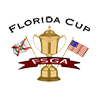During a course rating, the rating committee evaluates 10 obstacles and measures the distance to each obstacle, as well as the effect it has on scratch and bogey golfers.
All obstacles are given a numerical value ranging from 0 (non-existent) to 10 (extremely significant). All values are obtained from the World Handicap System Course Rating Guide. The numbers assigned are based on data gathered by the World Handicap Research Team, which measures distances to prescribed landing zones and assigns the appropriate values.
The rating process requires a study of each hole, including detailed data obtained at all landing zones for both the scratch and the bogey golfer. The rating teams use the average shot lengths for both scratch and bogey golfers to determine the landing zones. Length corrections and obstacle values are considered at each landing zone.
The following obstacles are evaluated for each landing zone for both the scratch and the bogey golfer:
Topography: A player’s stance or lie in the landing zone, and whether the player has an uphill or downhill shot to the green.
Fairway: The width of the fairway from which a scratch and bogey player will play his shots.
Green Target: The difficulty of hitting the green with the approach shot. The size of the green and the length of the approach shot are the primary factors.
Recoverability and Rough: The difficulty of a recovery shot from the landing zone or green determines the difficulty.
Bunkers: Difficulty is based on the bunkers’ size and proximity to target areas rather than simply the number of bunkers. Special attention is placed on the depth and severity of the bunkers.
Crossing Obstacles : Crossing obstacles consist of penalty areas, extreme rough (including desert) and out of bound which are carried to play the thole. Holes may have multiple crossing situations and rating teams will asses the safe crossing of the obstacles.
Lateral Obstacle: Lateral Obstacles include penalty area, extreme rough and out of bound that come into play laterally on the hole. Lateral Obstacles are evaluated based on proximity from the centre of the faitway or centre of the green.
Trees: The rating for trees depends on the size, density and distance from the center of the landing zone and green. The probability of recovering from various locations within a group of trees is also considered.
Green Surface: Green surface difficulty is based on the speed and contours of the putting surface. Speed is determined using a stimpmeter reading under mid-season playing conditions.
Psychological: The mental effect on play based on the number and magnitude of above-average ratings in other obstacle categories. The location of many punitive obstacles close to a target area creates uneasiness in the mind of a player, and may be reflected in his or her score.
Effective Length Corrections
Roll: Adjustment for roll is based on uphill or downhill landing zones as well as the condition of the fairway as soft fairways result in holes playing longer while firm fairways make hole play shorter.
Elevation: Uphill holes play longer than level holes and downhill holes play shorter. The FSGA uses GPS to determine elevation changes between tees and greens.
Dogleg /Forced Lay Up: Adjustments are made if the effective playing length of a hole is different from the measured length because of a doglef or forced lay up.
Prevailing Wind: Adjustments for wind are made mostly on seaside courses and courses in the plains states not protected by trees. Wind is also taken into consideration on open courses where the wind is prevalent and generally bows in the same direction.
Altitude: At courses 2,000 feet or more above sea level, corrections are made to the effective playing length of the course because shots travel farther in the thin air.
Each obstacle is assigned a value of 0 to 10, depending on its relation to how a scratch or bogey golfer would play the hole. When the evaluation is complete, the numbers for each hole's obstacles are totaled and multiplied by a relative weighting factor. The weighted obstacle stroke values are applied to scratch and bogey formulas and then converted to strokes. Those strokes are added or subtracted from the Yardage Rating to produce a Bogey Rating and Course Rating, and the difference between those two values multiplied by a constant factor is the Slope Rating.
Courses must be re-rated at least every 10 years, or if it is a new golf course, within 5 years. A course must also be re-rated if significant changes have been made to the course. To schedule a course rating, the club representative needs to contact its authorized golf association.





